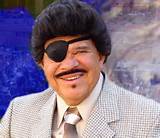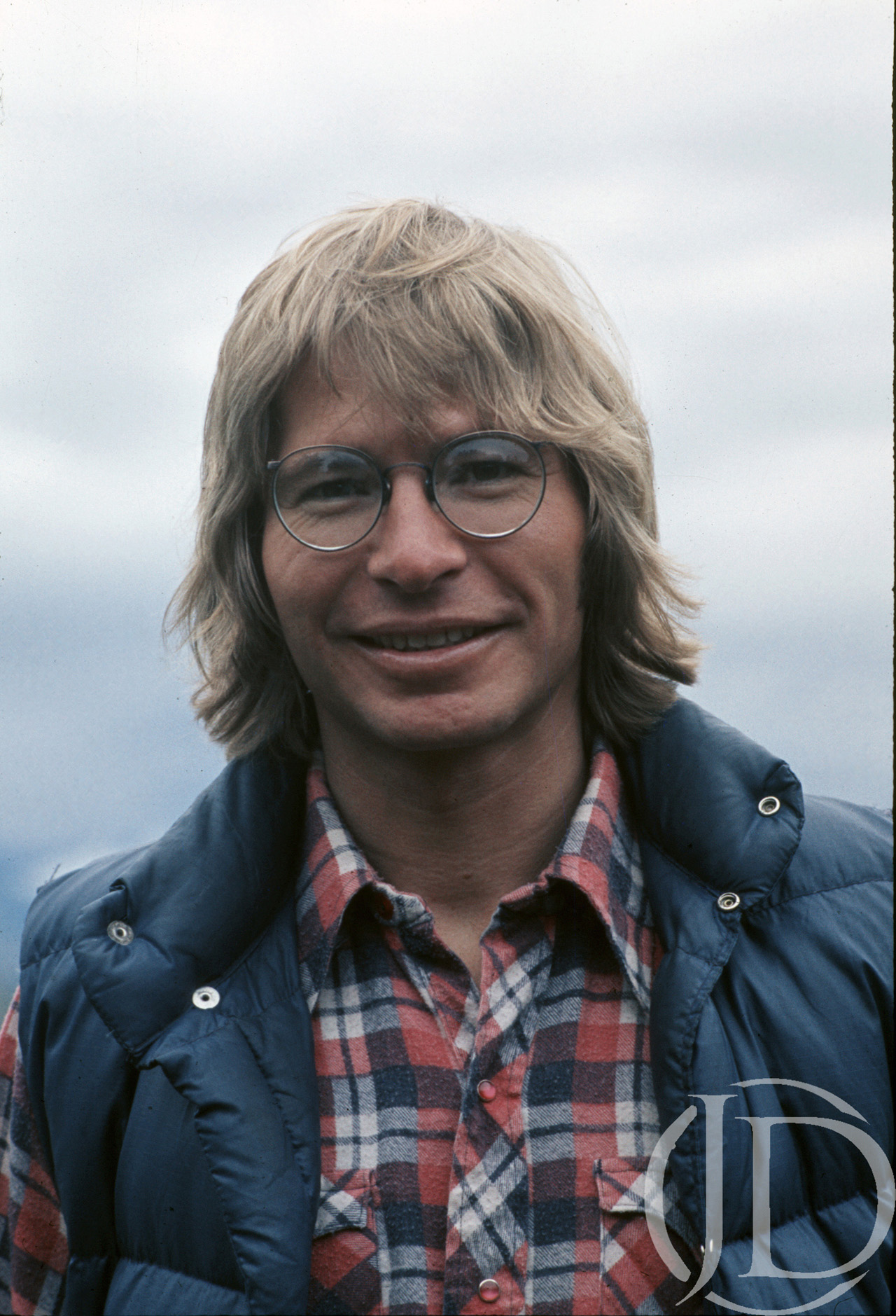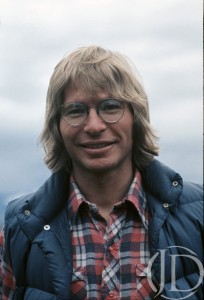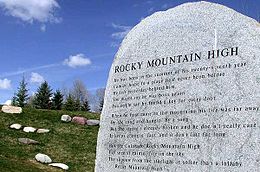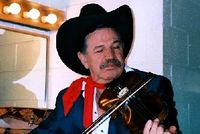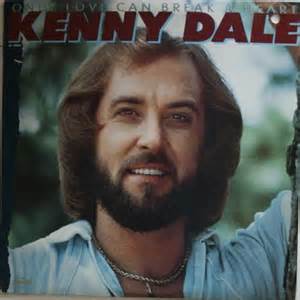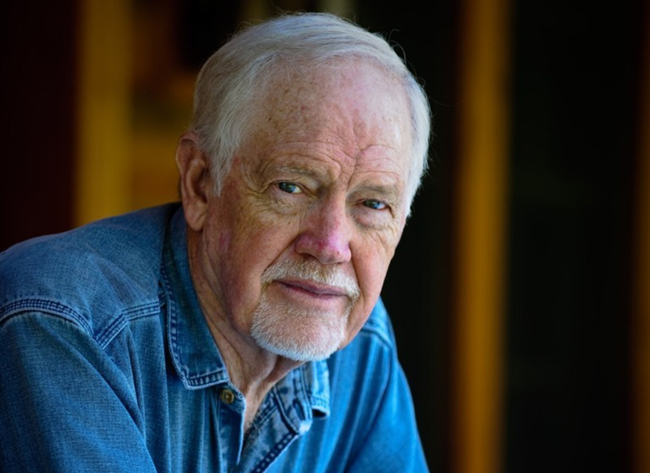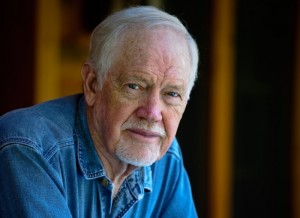Alberto Nelson “Al Hurricane” Sanchez ~ Dixon | Albuquerque
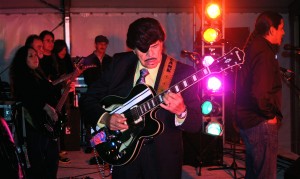
Recipient of the New Mexico Music Commission’s 2017 Platinum Music Award, Al Hurricane (July 10, 1936-October 22, 2017) is a singer-songwriter, dubbed “The Godfather” of New Mexico music. He has released more than thirty albums and is best known for his contributions to New Mexico’s unique style of Spanish music.
He received his nickname, Hurricane, from his mother. As a child, he would accidentally knock things over; the nickname became synonymous with his band, studio, and a recording label. His signature look, which includes an eye-patch, is due to an automobile accident that occurred during the 1960s. These things, as well as his performance style, have led to Al Hurricane being known for his ability to improvise and adapt. They have also led to his music and image being ultimately entangled with the history of New Mexico music.
Al Hurricane is often accompanied on stage by his children, sons Al Hurricane, Jr. and Jerry Dean, and daughter Erika. He has also performed frequently with his brothers Baby Gaby and Tiny Morrie. He was the subject of a tribute concert which was recorded as a set of two tribute albums, as well a DVD. He has also performed alongside Fats Domino, Marvin Gaye, Chuck Berry, Jimmy Clanton, and Chubby Checker.
Hard-working father and tenacious mother (1930s – 1950s)
Al Hurricane was born Alberto Nelson Sanchez the first of four children to Jose Margarito Sanchez (April 28, 1910, Ojo Sarco, New Mexico – September 10, 1979, Albuquerque, New Mexico) and Bennie L. Sanchez (November 26, 1918, Albuquerque, New Mexico – January 27, 2011, Albuquerque, New Mexico) in Dixon, New Mexico.
The Sanchez family moved to Silver City and the father worked in the mines, until he became injured. At which point Bennie returned to work as a clerk at a department store in a Silver City. Jose had a band, called Los Sanchez, Bennie would often join in on vocals and guitar. She eventually became a licensed practical nurse while traveling with physicians throughout Northern New Mexico. His father and mother were extremely supportive of their children. Jose, Al’s father, was a miner during most of his childhood; but he still found the time to teach the, five-year-old, Alberto how to play the guitar. Al’s mother, Bennie, made quite a name for herself, she became the president of Hurricane Enterprises. She not only promoted her musically-inclined family, but also promoted concerts for Johnny Cash, Ray Charles, Chubby Checker, Fats Domino, Little Richard and, the one she was particularly proud of, a 1972 Elvis Presley concert in Albuquerque. Her own musically talented family didn’t just consist of her sons Al Hurricane, Baby Gaby and Tiny Morrie. It also consisted of Al Hurricane’s sons Al Hurricane, Jr. and Jerry Dean; as well as Tiny Morrie’s children Lorenzo Antonio and the members of Sparx.
During his childhood he moved to Albuquerque, where he began to play and perform in Old Town at the age of 12. He attended Old Albuquerque High, which he graduated in 1954.
Al Hurricane & the Night Rockers (1950s – 1960s)
Al became a singing waiter at the La Casita Restaurant in Old Town and, while he wasn’t working, he played for tips in and around Old Town Plaza. He also began to sing and write country and rock n’ roll music. During this time Al would also perform at the Sky Line Club. It was at this club, and several others, around Albuquerque and New Mexico that he built his audience. One of Al Hurricane’s first single records was distributed by Warner Bros. Records it contains two tracks, titled “Lobo” & “Racer”. They are both instrumental rock songs and were released in 1962 under the band name Al Hurricane & the Night Rockers with writing credits to “Albert Sanchez – Morrie Sanchez”. Other single recordings by Al Hurricane from this time, recorded at Norman Petty’s studio include, “South Bend / Burrito” (1960 Apt Records instrumental), “Panchita / La Mula Bronca” (Challenge Records, first tracks with vocals), “Mexican Cat / Pedro’s Girlfriend” (Hurricane Records instrumental), “Rosita’s Café / Only A Game (Tiny Morrie)” (Hurricane Records).
Recording and touring (1960s – 1970s)
A few years later, in 1967, he would release his first album, which was titled Mi Saxophone. The two lead singles off that album were “Sentimiento” and its eponymous song “Mi Saxophone”. “Sentimiento” had already been released in 1965 as a single. These early recordings were recorded on equipment purchased from Norman Petty, that Buddy Holly recorded on. This recording equipment gave the recordings their signature 50s sound.
He began to perform outside the New Mexico music scene, performing in throughout the American Southwest and Western United States in Arizona, California, Colorado, Idaho, Montana, Nevada, New Mexico, Oregon, Utah, Washington, and Wyoming; he even toured Northern Mexico in Baja California, Chihuahua, Coahuila, Durango, Mexico City, Nuevo León, Sonora, and Tamaulipas. In fact, it was on his way to a concert in Denver, Colorado. on November 1, 1969, where he got into a car accident in which he lost his right-eye. This did not deter him from pursuing his musical career, instead it gave him his unique performing look, an eye-patch across his right eye. He even went on to play other American cities in other regions such as Chicago and Miami; Al Hurricane has even played internationally in the cities of Asunción, Buenos Aires, and Málaga.
Al recorded several albums from 1967-to-1974, these included three albums recorded around 1973; Canciones del Alma, Sigue Cantando, and Corridos Canta. These were each Spanish language releases, which continued to blend the sounds of New Mexico, the Southwestern United States’. The Latin, folk, and country/western sound was a hit each of the three communities of fans. Both Chicano and Country venues would be popular spots for Al Hurricane to play his music.
Another release at the time, Instrumentales con Al Hurricane, saw Al return to his old instrumental rock style of music.
In 1974, Al Hurricane saw two major milestones. his first full-length collaborative album with his brother Tiny Morrie; Para Las Madrecitas, the album is a tribute album to their mom, and a tribute to mothers in general. It also saw “Sentimiento”, his first hit single, selling its two-hundred-and-fifty-thousandth copy.
“Val de la O Show” & “The Far West Club” (1970s – 1980s)
Al Hurricane performed on a popular nationally syndicated television show called the Val De La O Show. It was a talk show and a music variety show. On his appearances he chatted with the host, and performed new hits from his recently released albums, which included material from his albums up to Vestido Mojado. The songs he played on the show also included a live performance of a Mariachi version of his hit “Sentimiento”, to lip sync-style music videos of recent hits like “Vestido Mojado”. The music video clips also contained some of his first video appearances performing with his son, Al Hurricane, Jr., as well as his brothers Tiny Morrie and Baby Gaby.
During the late 1960s, Al Hurricane, Tiny Morrie, and Bennie Sanchez purchased The Sky Line Club and renamed it “The Far West” in the early 1970s. From here Al performed with a band billed as Al Hurricane Band. The nightclub also became a hotspot for Country/Western and Spanish language music and dance. Artists like Purple Haze made the club their regular place to perform. It was also a spot where traveling Chicano and Tejano artists would perform, including Selena.
In 1979, father and son, Al Hurricane and Al Hurricane, Jr. recorded their first album together called Cantan Corridos.
“La Prision de Santa Fe” and “Bandido” (1980s – 1990s)
During Selena’s concert in the early 1980s, which Bennie Sanchez promoted, Selena met Al Hurricane and heard him perform his song “Sentimiento”. She went on to perform a cover, called “Sentimientos”, on her Alpha LP.
After the New Mexico State Penitentiary riot, in 1980, Al Hurricane wrote a song that was “strictly narrative, not a subjective account or soapbox. The song does not attempt to assign blame.”The song was called “(El Corrido De) La Prison De Santa Fe” it is the lead song on an album titled, La Prision de Santa Fe.
A few of Bennie Sanchez’s kids, Al Hurricane, Tiny Morrie, and Baby Gaby, got together to do a tribute album for her. It was similar in concept as Al and Morrie’s previous mother related album, but it was a bit more ambitious than their previous effort. Madrecita, Te Debo Tanto also had performances by Lorenzo Antonio and Gloria Pohl, the wife of Tiny Morrie, the mother of Lorenzo Antonio.
After these two projects, Al Hurricane became the lead singer in the supergroup Bandido. The band released four albums during the 1980s, it saw success not just on New Mexico radio; but also in Chicago, along the west coast, and internationally in Germany, Venezuela, and Spain.
The 80s also saw the release of another collaborative effort, this time it was collaborative compilation with Morrie and Jr., entitled 15 Exitos Rancheros. The album was a hit within Albuquerque, and got plenty of airtime on Radio Lobo.
After three Bandido releases, two collaborative family LPs, and a compilation album called Exitos De Al Hurricane. Al Hurricane released his next solo album The Return of Al Hurricane “EL” Godfather.
“La Leyenda” and “The Godfather” (1990s – 2000s)
He did another collaborative compilation album with Tiny Morrie and Al Hurricane, Jr. 15 Exitos Rancheros, Vol. 2 in 1994.
Once he returned to his solo albums Al Hurricane began to focus more on Ranchera music on his 1995 Sigue… “La Leyenda”!!! and mid-90s album The Legend of New Mexico. Not only did he want emphasize the Ranchera sound, he also wanted to focus on his roots in Rock and Country/Western, he re-added Chuck Berry’s Johnny B. Goode and Hank Williams’ Jambalaya to his live-music repertoire.
In 2000, Al Hurricane was the subject of a documentary by DJR Productions, Al Hurricane: Native Legend. The documentary focused on the life and career of Al Hurricane. It ran sixty minutes, and contained old footage and photographs of Al Hurricane throughout his life. It also contained live performances of “Sentimiento”, “Johnny B. Goode”, and his, then unreleased, “Siempre”.
The album, Siempre, came out soon after the release of the documentary.; it continued Al Hurricane’s focus on Ranchera and Western sound, while adding in a Cumbia vibe into the beat. ¡Que Viva El Godfather!, released in 2003, showed an increased enthusiasm to include an even stronger mix of Ranchera and Cumbia. Both albums contained number one hits on local New Mexico radio stations.
Al Hurricane’s touring hadn’t stopped, he had continued to tour nationally and internationally. In Saginaw, Michigan, Al even managed to pull in a crowd of 8,000 people. According to a local paper, “the bouncy music was something even those who don’t habla Español still could savor.”
“Tribute” and “Hey Sugar Baby!” (2000s – 2010s)
Al Hurricane recorded his next album, Albuquerque, in 2007. The following year Isleta Casino & Showroom played host to A Tribute To Al Hurricane, the concert was recorded and released a set of two CDs and a DVD. The DVD contained small documentary-like slideshows that educate the audience in order to inform them on the upcoming artists and songs.
His latest album, 2010’s Hey Sugar Baby! had Al Hurricane playing around his sound in fun and creative ways. The album ventures in Reggae, Reggaeton, as well as Italian, Brazilian, and Turkish genres.
Personal life
He was married twice, but is no longer married. He has had eight children: Al Hurricane Jr., Darlene, Sandra, and Jerry Dean from his first marriage, and Nelson, Erika, and Danielle and Lynnea from his second marriage. Lynnea, the twin of Danielle, died at the age of 2.
Discography
Solo studio albums
- Mi Saxophone (1968)
- Canciones del Alma (1970?)
- Sigue Cantando (1973?)
- Corridos Canta (1973?)
- Instrumentales con Al Hurricane (1973?)
- Vestido Mojado (1974)
- La Prision de Santa Fe (1980)
- Exitos De Al Hurricane (1980?)
- The Return of Al Hurricane “EL” Godfather (1980?)
- Sigue… “La Leyenda”!!! (1995)
- The Legend of New Mexico (1995?)
- Siempre (2000?)
- ¡Que Viva El Godfather! (2003)
- Albuquerque (2007)
- Hey Sugar Baby! (2010)
Studio albums with Tiny Morrie, Al Hurricane, Jr., Gloria Pohl, Baby Gaby, Lorenzo Antonio
- Para Las Madrecitas with Tiny Morrie (1974)
- Cantan Corridos with Al Hurricane, Jr. (1979)
- Madrecita, Te Debo Tanto with Tiny Morrie, Al Hurricane, Jr., Gloria Pohl, Baby Gaby, and Lorenzo Antonio (1979)
- 15 Exitos Rancheros with Tiny Morrie & Al Hurricane, Jr. (1986)
- 15 Exitos Rancheros, Vol. 2 with Tiny Morrie & Al Hurricane, Jr. (1994)
- Live at the Kimo – Vol.1 and Vol. 2 – with Al Hurricane, Jr. (2014)
Studio albums with Bandido
Under the EMI Capitol and/or Discos Musart label, in the 1980s Al Hurricane released four albums with the supergroup Bandido.
- Bandido (first release)
- Bandido (second release)
- Bandido (third release)
- 15 Exitos de Groupo Bandido
Live tribute albums
- A Tribute To Al Hurricane – Live, Vol. 1 (2008)
- A Tribute To Al Hurricane – Live, Vol. 2 (2008)
Documentaries with live performances
- Al Hurricane: Native Legend (2000)
- A Tribute To Al Hurricane (2008)
above: Al Hurricane’s tribute video from the 2017 Platinum Music Awards show.
for more information: alhurricane.net
source: wikipedia.org
